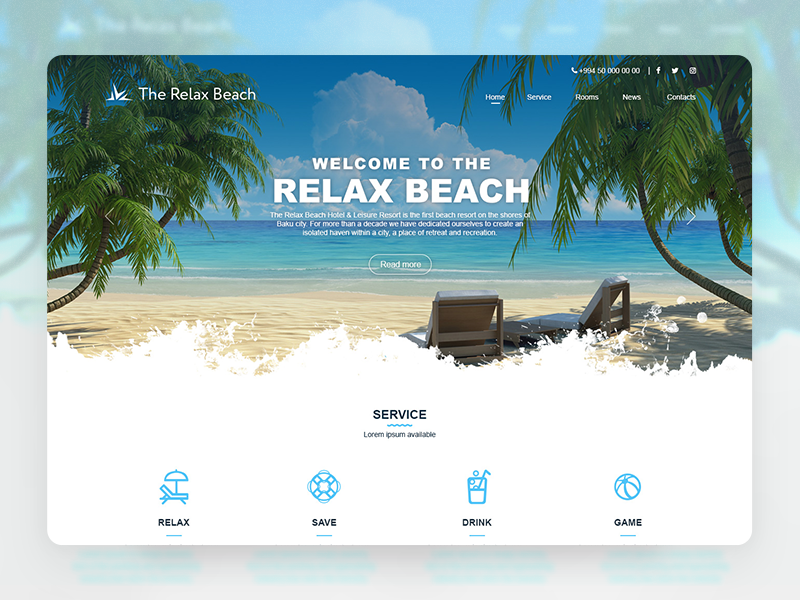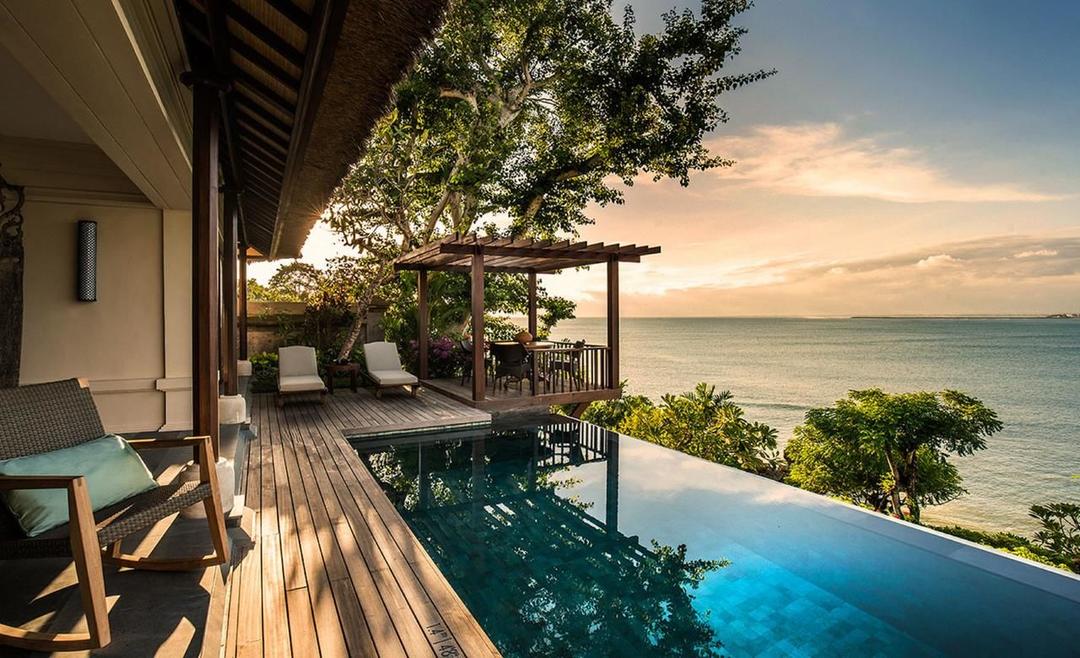Beach resort website design is more than just pretty pictures; it’s about crafting an online experience that converts browsers into booked guests. Think stunning visuals, intuitive navigation, and a seamless booking process – all working together to showcase your resort’s unique charm and convince potential visitors to choose you. We’ll explore key elements like UX design, compelling content, and mobile optimization to help you build a website that truly shines.
This guide covers everything from choosing the right imagery and crafting engaging social media posts to implementing a secure booking system and ensuring your site is accessible to all. We’ll delve into practical strategies, offering clear examples and actionable advice to help you create a website that not only attracts visitors but also drives bookings and builds a strong online presence.
Website Design & User Experience (UX)
Creating a captivating and user-friendly website is crucial for attracting and converting potential guests. A well-designed beach resort website should seamlessly guide visitors through the booking process, showcasing the resort’s unique offerings and creating a sense of excitement and anticipation.
Homepage Layout Design
The homepage should immediately convey the resort’s essence through high-quality imagery. Large, captivating photos or a video showcasing the beach, luxurious rooms, and resort amenities are essential. Clear calls to action, such as “Book Now,” “View Rooms,” or “Explore Packages,” should be prominently displayed and easily accessible. Consider using a visually appealing grid layout to organize content effectively.
User Flow Diagram, Beach resort website
A typical user journey might start with a search engine, leading to the resort’s website. From there, the user might explore the rooms and amenities, view pricing, check availability, create an account, fill out a booking form, and finally receive a confirmation. Each step should be intuitive and straightforward, minimizing friction and maximizing conversion rates. A well-designed user flow diagram helps visualize and optimize this process.
Navigation Menu Examples
Effective navigation menus are crucial for website usability. Consider a horizontal menu at the top with categories like “Rooms,” “Amenities,” “Packages,” “About Us,” and “Contact Us.” Alternatively, a vertical menu on the side could work well for mobile devices. A search bar should be readily available to help users quickly find specific information. A mega-menu can provide more detailed sub-categories within each main category, enhancing navigation.
Interactive Elements
Interactive elements significantly enhance user engagement. Virtual tours or 360° views allow potential guests to explore the resort virtually, creating a more immersive experience. Interactive maps can highlight resort locations and amenities. High-quality videos showcasing resort activities and ambiance further enhance the website’s appeal.
Responsive Website Layout with HTML Table
A responsive layout adapts to different screen sizes. Using HTML table tags, a 4-column responsive structure for displaying resort amenities can be achieved by nesting tables within tables. The inner tables would adjust their width based on the screen size, ensuring optimal viewing on desktops, tablets, and mobile devices. Each column could feature an amenity image, description, and perhaps a link for more information.
This method, while functional, is generally less preferred than CSS-based approaches for responsiveness, but provides a simple illustration for the concept.
Content Strategy & Messaging
Effective content strategy is key to attracting and engaging potential guests. Compelling descriptions, high-quality visuals, and a consistent brand voice are crucial. Social media engagement further extends the reach and impact of the resort’s online presence.
Unique Selling Propositions (USPs)
Clearly articulate what sets the resort apart from competitors. Is it the exceptional beachfront location, the luxurious amenities, the personalized service, or a unique activity offering? Highlight these USPs in compelling descriptions throughout the website.
Engaging Social Media Posts
Share visually appealing posts showcasing the resort’s atmosphere, activities, and guest experiences. Use high-quality photos and videos. Include relevant hashtags to increase visibility and engagement. Consider running contests and giveaways to further engage your audience.
High-Quality Photography and Videography
Professional photography and videography are essential for showcasing the resort’s beauty and amenities. High-resolution images and videos create a sense of place and evoke emotion, inspiring potential guests to book a stay.
Content Calendar
A content calendar helps plan and schedule content for the website and social media platforms. This ensures a consistent flow of fresh, engaging content. The calendar should include the type of content, publication date, and platform.
Frequently Asked Questions (FAQs)
- What are the check-in and check-out times?
- What amenities are included in the room rate?
- What activities are available at the resort?
- What is the resort’s cancellation policy?
- How can I make a reservation?
- What payment methods are accepted?
- Is there Wi-Fi available at the resort?
- Are pets allowed?
- What is the closest airport?
- Is transportation available from the airport to the resort?
Booking & Reservations System
A seamless online booking system is crucial for converting website visitors into paying guests. The process should be simple, intuitive, and secure.
Seamless Online Booking System
The system should allow guests to easily select dates, room types, and add-ons (such as spa treatments or excursions). A clear calendar view showing availability is essential. Real-time availability updates prevent double bookings.
Step-by-Step Booking Guide
A step-by-step guide on the website walks users through the booking process, minimizing confusion and ensuring a smooth experience. Clear instructions and visual cues make the process intuitive.
Confirmation Emails and Reminders
Clear and concise confirmation emails and booking reminders should be sent to guests. These emails should include booking details, payment information, and contact information.
Online Booking Platforms

Various online booking platforms (like Booking.com, Expedia) offer different integration capabilities. Consider factors like ease of integration, commission fees, and reach when choosing a platform.
Secure Payment Gateway
A secure payment gateway is essential for processing payments safely and securely. This protects both the resort and the guests’ financial information. Compliance with industry security standards (like PCI DSS) is vital.
Imagery & Visuals: Beach Resort Website
High-quality visuals are crucial for creating a captivating online presence. Professional photography and videography are essential for showcasing the resort’s beauty and amenities effectively.
Descriptive Image Captions
Captions should go beyond simple descriptions. They should evoke emotion and create a sense of place. For example, instead of “Room with a view,” a caption might say, “Wake up to breathtaking sunrise views over the turquoise ocean from your private balcony, the gentle waves providing a soothing soundtrack to your morning.” Highlight lighting, composition, and the overall emotional impact of the image.
Visual Style and Tone
Maintain a consistent brand identity throughout the website. Use a visual style that reflects the resort’s personality and target audience. Whether it’s a luxurious, rustic, or modern aesthetic, consistency is key.
Hero Image Design
The hero image is the first thing visitors see. It should showcase the resort’s most attractive feature, using evocative language to describe its composition and visual impact. For example, a hero image might feature a panoramic view of the beach at sunset, with the caption: “Escape to paradise. Let the golden hues of sunset paint an unforgettable memory as you relax on our pristine beach.”
High-Quality Images and Videos
High-quality images and videos are crucial for creating a sense of place and evoking emotion in potential guests. They showcase the resort’s amenities and atmosphere, enticing visitors to book a stay.
Professional vs. Amateur Photography
Professional photography uses superior lighting, composition, and post-processing techniques, resulting in images that are visually appealing and emotionally engaging. Amateur photography may lack these qualities, potentially diminishing the resort’s online presence.
Mobile Optimization & Accessibility

A mobile-friendly and accessible website is crucial for reaching a wider audience and providing a positive user experience for everyone.
Mobile Responsiveness
Mobile responsiveness ensures the website adapts seamlessly to different screen sizes. This is essential for providing a positive user experience on smartphones and tablets. Poor mobile optimization can lead to high bounce rates and lost bookings.
Planning your beach getaway? A well-designed beach resort website is key to finding the perfect spot. But if you’re not sure where to start, check out resorts near me to get some ideas for locations. Once you’ve narrowed down your options, dive deeper into individual beach resort websites for details on amenities and booking.
Finding your dream beach vacation starts with a little online exploration!
Mobile Navigation and Layout
Effective mobile navigation typically uses a hamburger menu or a simplified navigation bar. A clean and uncluttered layout ensures easy navigation on smaller screens.
Planning a beach getaway? A good beach resort website is key to finding the perfect spot. If you’re thinking of a Southeast Asian escape, check out this awesome resource for planning your batam trip , which often includes details on amazing beach resorts. Once you’ve got your destination picked out, use those resort websites to book your dream vacation!
Accessibility Guidelines Checklist
- Ensure sufficient color contrast between text and background.
- Use descriptive alt text for all images.
- Provide keyboard navigation for all interactive elements.
- Use appropriate heading levels (H1-H6) to structure content.
- Ensure compatibility with assistive technologies (screen readers).
Alt Text Implementation
Alt text provides textual descriptions of images, improving accessibility for visually impaired users who rely on screen readers. Accurate and detailed alt text is crucial.
Accessible Color Palettes and Font Sizes
| Color Palette | Font Size (px) |
|---|---|
| Dark text on light background | 16 |
| Light text on dark background | 18 |
| High contrast combinations (e.g., black/white, blue/yellow) | 16-20 (adjust for readability) |
Conclusive Thoughts
Creating a successful beach resort website requires a blend of artistry and strategy. By focusing on a user-centric design, compelling content, and a smooth booking process, you can transform your online presence into a powerful tool for attracting guests and growing your business. Remember, your website is often the first impression potential guests will have of your resort, so make it count!
Commonly Asked Questions
How much does it cost to build a beach resort website?
Costs vary greatly depending on complexity, features, and whether you use a template or hire a developer. Expect to spend anywhere from a few hundred to several thousand dollars.
What are the best website platforms for a beach resort?
WordPress, Wix, and Squarespace are popular choices, offering varying levels of customization and ease of use. WordPress is highly versatile but may require more technical expertise.
How can I improve my website’s search engine ranking ()?
Use relevant s, optimize images, build high-quality content, and get backlinks from reputable sites. Consider using plugins for WordPress.
How do I handle online reviews and manage my reputation?
Encourage guests to leave reviews on platforms like TripAdvisor and Google My Business. Respond to both positive and negative reviews professionally and promptly.